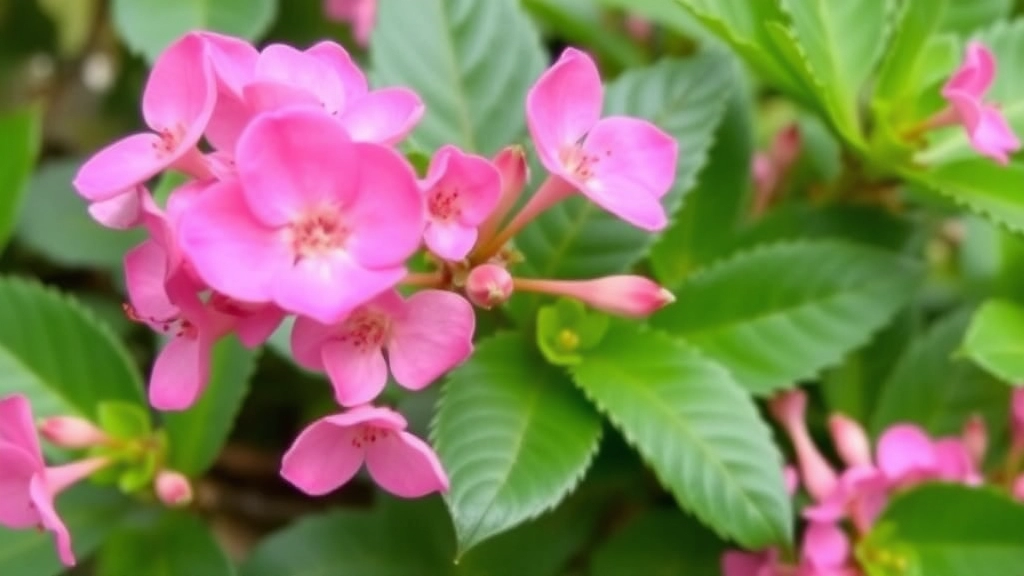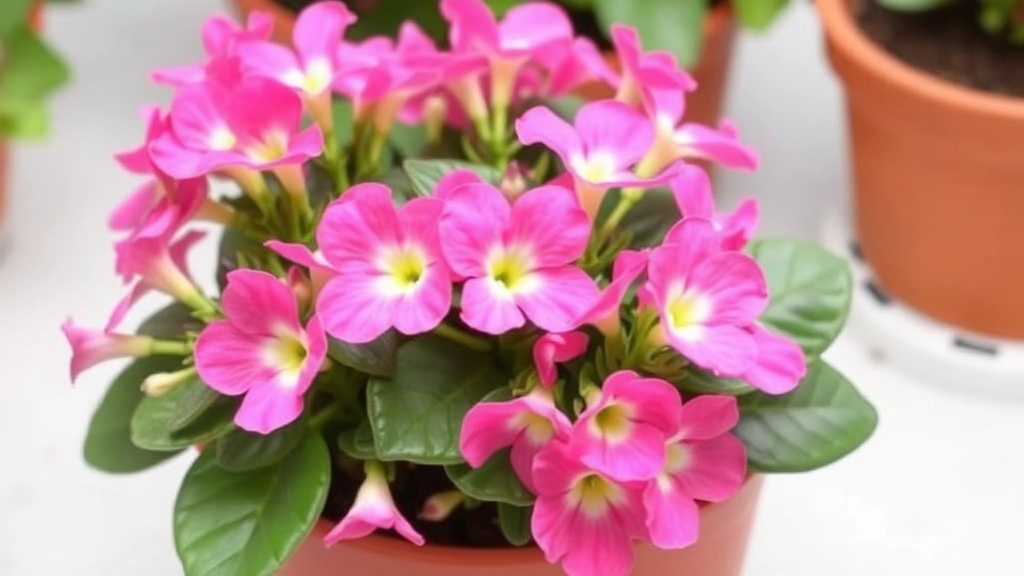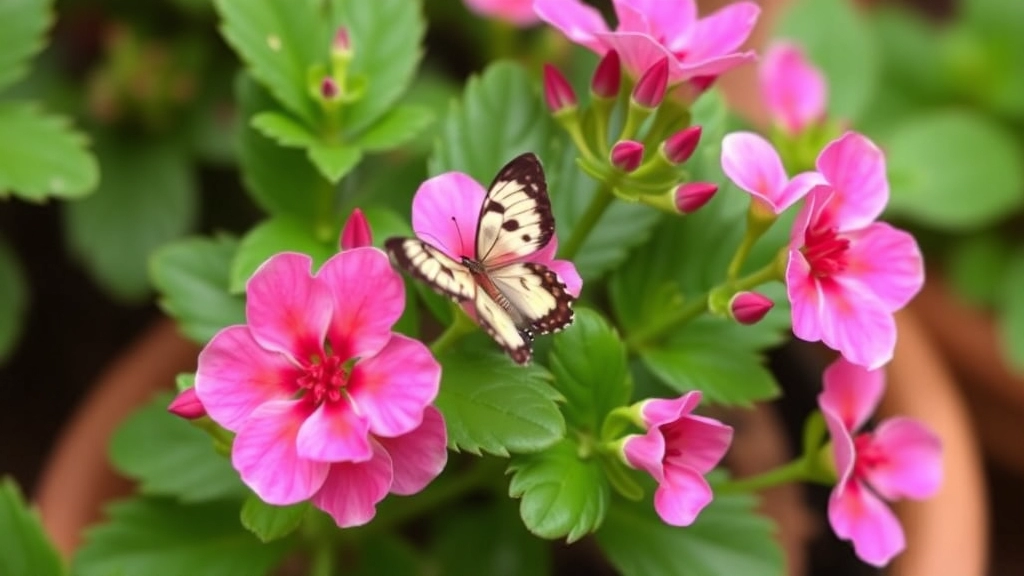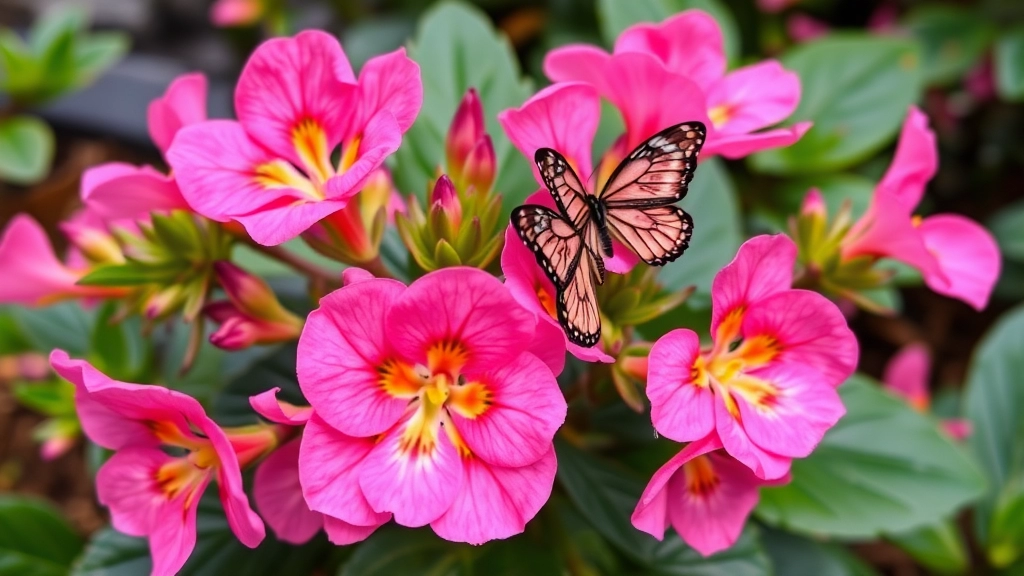Kalanchoe Pink Butterflies: Toxicity Overview
Ever wondered if the Kalanchoe Pink Butterflies is toxic? I did too, especially since it’s such a popular succulent in many homes. The short answer is yes, Kalanchoe Pink Butterflies can be toxic to both pets and humans. This vibrant plant contains compounds that can cause serious health issues if ingested, making it crucial to understand the risks and symptoms associated with its toxicity.
Symptoms of Poisoning
Knowing the symptoms of Kalanchoe Pink Butterflies poisoning can be a lifesaver. Pets, particularly cats and dogs, may experience vomiting, diarrhoea, and lethargy if they munch on the plant. For humans, symptoms can range from mild stomach upset to more severe reactions. Handling this plant with care and keeping it out of reach from curious pets and children is essential for a safe home environment.
When it comes to our beloved pets and family members, safety is always a top concern.
Many people wonder: **Is Kalanchoe Pink Butterflies toxic to pets and humans?**
The short answer is yes; Kalanchoe Pink Butterflies is indeed toxic.
This succulent plant contains compounds that can be harmful if ingested.
## Toxicity Overview
– **Pets**: Cats and dogs are particularly at risk. Symptoms can range from mild to severe, depending on the amount ingested.
– **Humans**: While the toxicity is generally lower for humans, ingestion can still lead to unpleasant symptoms, especially in children.
## Key Points to Remember
– **Symptoms in Pets**: Vomiting, diarrhea, and lethargy can occur if they consume parts of the plant.
– **Symptoms in Humans**: Nausea and stomach discomfort may arise from accidental ingestion.
For more detailed care instructions, you might want to check out the [step-by-step guide to propagating Kalanchoe Pink Butterflies](https://planthq.org/how-to-propagate-kalanchoe-pink-butterflies-stepbystep-guide-2/) and learn about the [health benefits of Kalanchoe Pinnata extract](https://planthq.org/health-benefits-of-kalanchoe-pinnata-extract/).
Common Symptoms of Kalanchoe Pink Butterflies Poisoning

So, you’re wondering what happens if your curious pet or little one nibbles on Kalanchoe Pink Butterflies?
First off, it’s crucial to know that this plant can cause some not-so-fun symptoms if ingested.
Symptoms to Watch For
If you suspect ingestion, keep an eye out for these common symptoms:
- Vomiting: This is often the first sign. If your pet or child is throwing up, it’s a red flag.
- Diarrhoea: Loose stools can follow, leading to dehydration if not managed.
- Lethargy: A sudden lack of energy or interest in activities can indicate something’s wrong.
- Drooling: Excessive drooling might occur, signalling distress.
- Abdominal Pain: Look for signs of discomfort, like whining or unusual postures.
- Heart Rate Changes: Increased heart rate can be serious and is worth noting.
These symptoms can vary depending on the size of the pet or child and how much they’ve ingested.
If you notice any of these signs, don’t panic, but do take action.
### Toxic Components in Kalanchoe Pink Butterflies
Understanding the toxic components in Kalanchoe Pink Butterflies is crucial for ensuring the safety of both pets and humans. This plant contains several compounds that can lead to poisoning if ingested.
#### Key Toxic Components:
– **Bufadienolides:** These are cardiac glycosides found in Kalanchoe Pink Butterflies. They can interfere with heart function, leading to symptoms like arrhythmias and increased heart rate.
– **Saponins:** Saponins can cause gastrointestinal upset. Symptoms may include vomiting and diarrhoea, which can be particularly concerning for pets.
– **Oxalates:** Although less common, oxalates can contribute to kidney issues in severe cases when ingested in large amounts.
#### Why This Matters:
Knowing these toxic components helps you understand the potential risks associated with Kalanchoe Pink Butterflies. If you suspect exposure, it’s essential to be aware of the symptoms that may arise. For more detailed information on how to care for this plant, check out the [complete guide to growing and caring for Kalanchoe Pink Butterflies](https://planthq.org/complete-guide-to-growing-and-caring-for-kalanchoe-pink-butterflies/). Additionally, if you’re worried about other types of Kalanchoe, you might find this [guide on Kalanchoe Flower Meaning, Symbolism, and Uses](https://planthq.org/kalanchoe-flower-meaning-symbolism-uses-cultural-significance/) helpful.
How to Handle Kalanchoe Pink Butterflies Safely

When it comes to caring for Kalanchoe Pink Butterflies, safety is paramount, especially if you have pets or young children at home. Understanding how to handle this plant can prevent potential poisoning incidents.
Safe Handling Tips
- Wear Gloves: Always wear gloves when handling Kalanchoe Pink Butterflies. This helps to avoid skin irritation and accidental ingestion of sap.
- Keep Out of Reach: Position your plant in a location that is inaccessible to pets and children. High shelves or hanging planters can be ideal.
- Educate Family Members: Make sure everyone in your household knows that Kalanchoe Pink Butterflies are toxic. Awareness can prevent accidental exposure.
- Avoid Eating: Never consume any part of the Kalanchoe Pink Butterflies plant. This includes leaves and flowers, as they can be harmful.
- Regular Maintenance: Keep the plant trimmed and healthy. This reduces the likelihood of any parts breaking off and causing potential hazards.
- Use Decorative Barriers: If you want to display your Kalanchoe Pink Butterflies, consider using decorative barriers or terrariums to keep it secure.
By following these simple tips, you can enjoy your Kalanchoe Pink Butterflies while minimizing risks.
Steps to Take If Ingestion Occurs
If you suspect that your pet or a human has ingested Kalanchoe Pink Butterflies, it’s crucial to act quickly and calmly. Understanding the right steps to take can make all the difference in ensuring safety.
Pet-Safe Alternatives to Kalanchoe Pink Butterflies

If you’re worried about Kalanchoe Pink Butterflies being toxic to your pets, you’re not alone. Many plant lovers face the same dilemma: how to enjoy greenery without putting our furry friends at risk. Thankfully, there are plenty of pet-safe alternatives that can brighten up your home without the worry.
Here are some fantastic options to consider:
- Spider Plant: These are super resilient and can thrive in various conditions. Plus, they’re non-toxic for pets!
- Boston Fern: A lush choice that adds a touch of elegance. They’re also safe for your four-legged companions.
- Areca Palm: This palm adds a tropical vibe and is safe for both cats and dogs.
- Bamboo Palm: Not only does it look great, but it also helps purify the air. A win-win for you and your pets!
- Calathea: Known for its stunning foliage, this beauty is non-toxic and pet-friendly.
- Parlor Palm: A classic choice that’s easy to care for and safe for pets.
These plants not only keep your home looking fresh but also provide peace of mind knowing your pets are safe.
Preventing Accidental Exposure and Poisoning
As we explore the safety measures surrounding Kalanchoe Pink Butterflies, it’s essential to focus on prevention strategies to ensure both pets and humans remain safe. Accidental exposure can lead to serious health issues, so being proactive is key.
Practical Tips for Prevention:
- Placement Matters:
- Keep Kalanchoe Pink Butterflies out of reach of pets and children.
- Consider hanging planters or high shelves.
- Educate Family Members:
- Inform everyone about the plant’s toxicity.
- Encourage children to avoid touching or ingesting any part of the plant.
- Use Clear Labels:
- Label the plant as toxic.
- This serves as a visual reminder for guests and family.
- Regular Checks:
- Inspect your home regularly for any fallen leaves or debris.
- Ensure that pets do not have access to these remnants.
- Create a Pet-Friendly Zone:
- Designate areas in your home where plants are off-limits to pets.
- Use barriers or gates if necessary.
By implementing these strategies, you can significantly reduce the risk of accidental exposure to Kalanchoe Pink Butterflies. For more detailed tips, you can refer to our guide on Kalanchoe toxicity and the steps to protect your pets from poisoning.
FAQs about Kalanchoe Pink Butterflies and Toxicity
What are the common symptoms of Kalanchoe Pink Butterflies poisoning?
If ingested, Kalanchoe Pink Butterflies can cause various symptoms including vomiting, diarrhoea, lethargy, drooling, abdominal pain, and heart rate changes.
How should I handle Kalanchoe Pink Butterflies to ensure safety?
To handle Kalanchoe Pink Butterflies safely, always wear gloves, keep the plant out of reach of pets and children, educate family members about its toxicity, avoid eating any part of the plant, maintain regular plant care, and use decorative barriers to secure the plant.
Are there any pet-safe alternatives to Kalanchoe Pink Butterflies?
Yes, there are several pet-safe alternatives including Spider Plant, Boston Fern, Areca Palm, Bamboo Palm, Calathea, and Parlor Palm. These plants are non-toxic and safe for pets.
What should I do if my pet or child ingests Kalanchoe Pink Butterflies?
If ingestion is suspected, monitor for symptoms like vomiting, diarrhoea, and lethargy. Seek veterinary or medical attention immediately to ensure proper care.
Why is it important to educate family members about the toxicity of Kalanchoe Pink Butterflies?
Educating family members helps prevent accidental exposure and ingestion, ensuring that everyone in the household is aware of the plant’s potential dangers.
Can I still keep Kalanchoe Pink Butterflies if I have pets or children?
Yes, you can keep the plant, but it requires extra precautions such as keeping it out of reach, using barriers, and ensuring that everyone in the household understands its toxicity.
